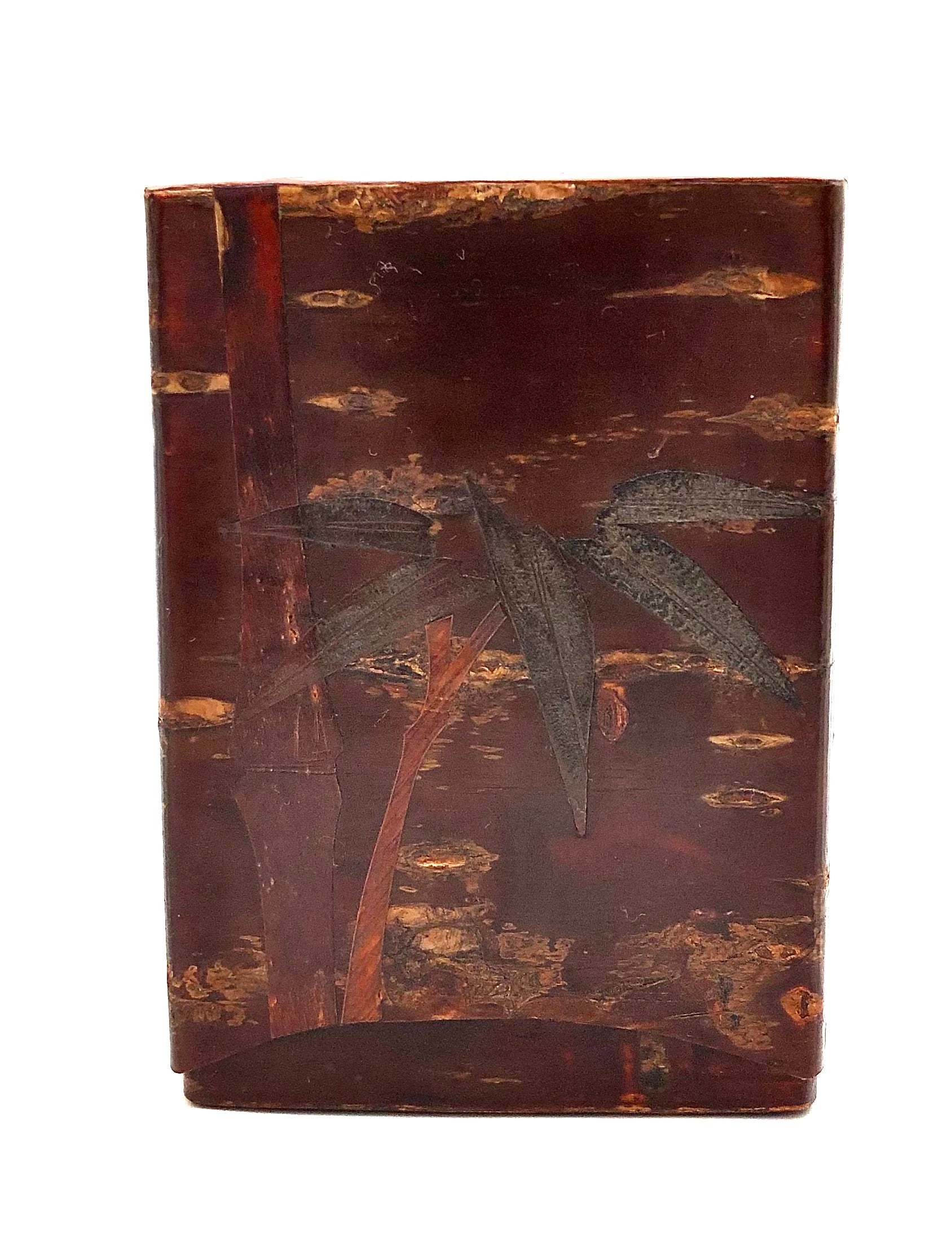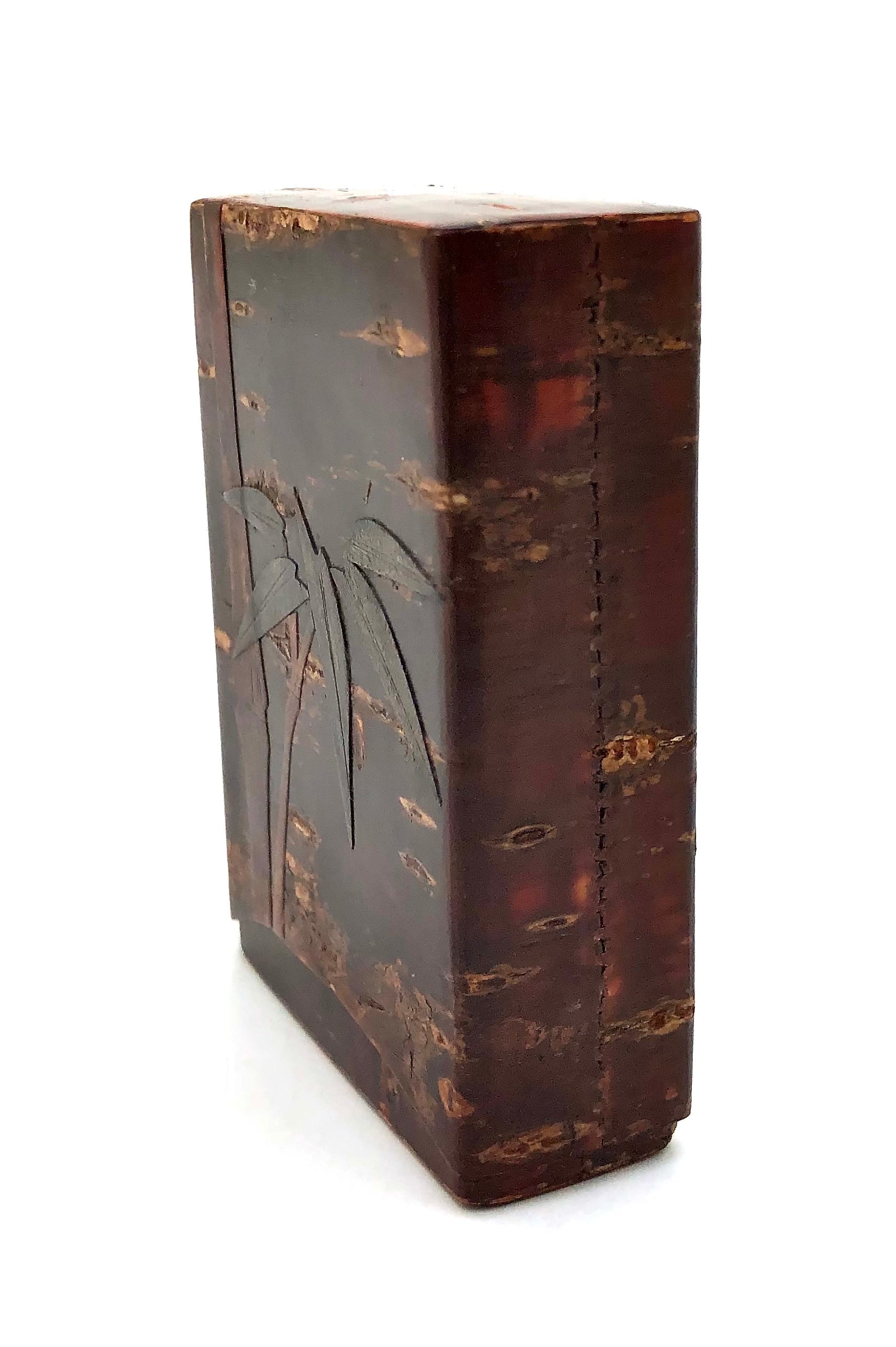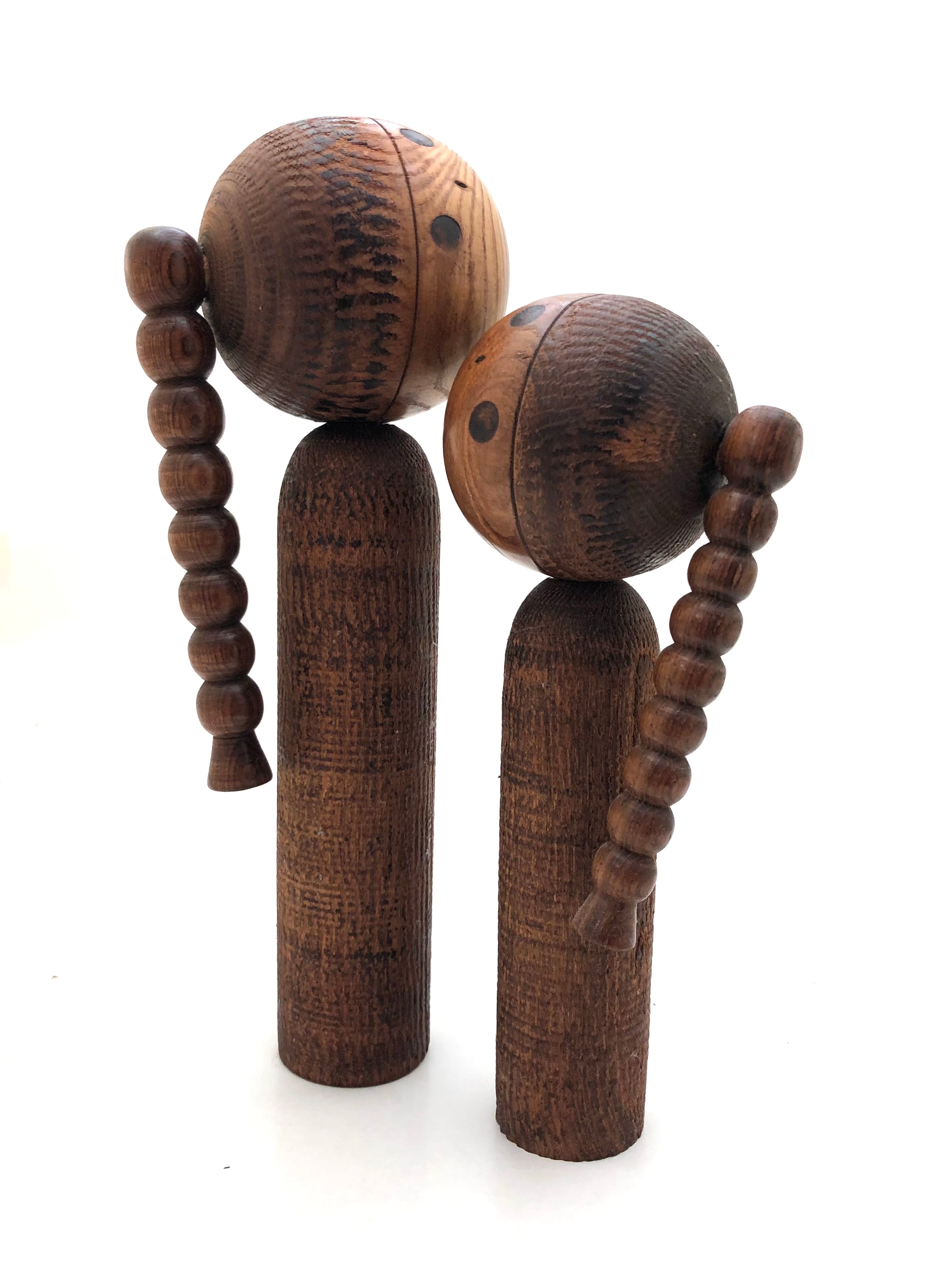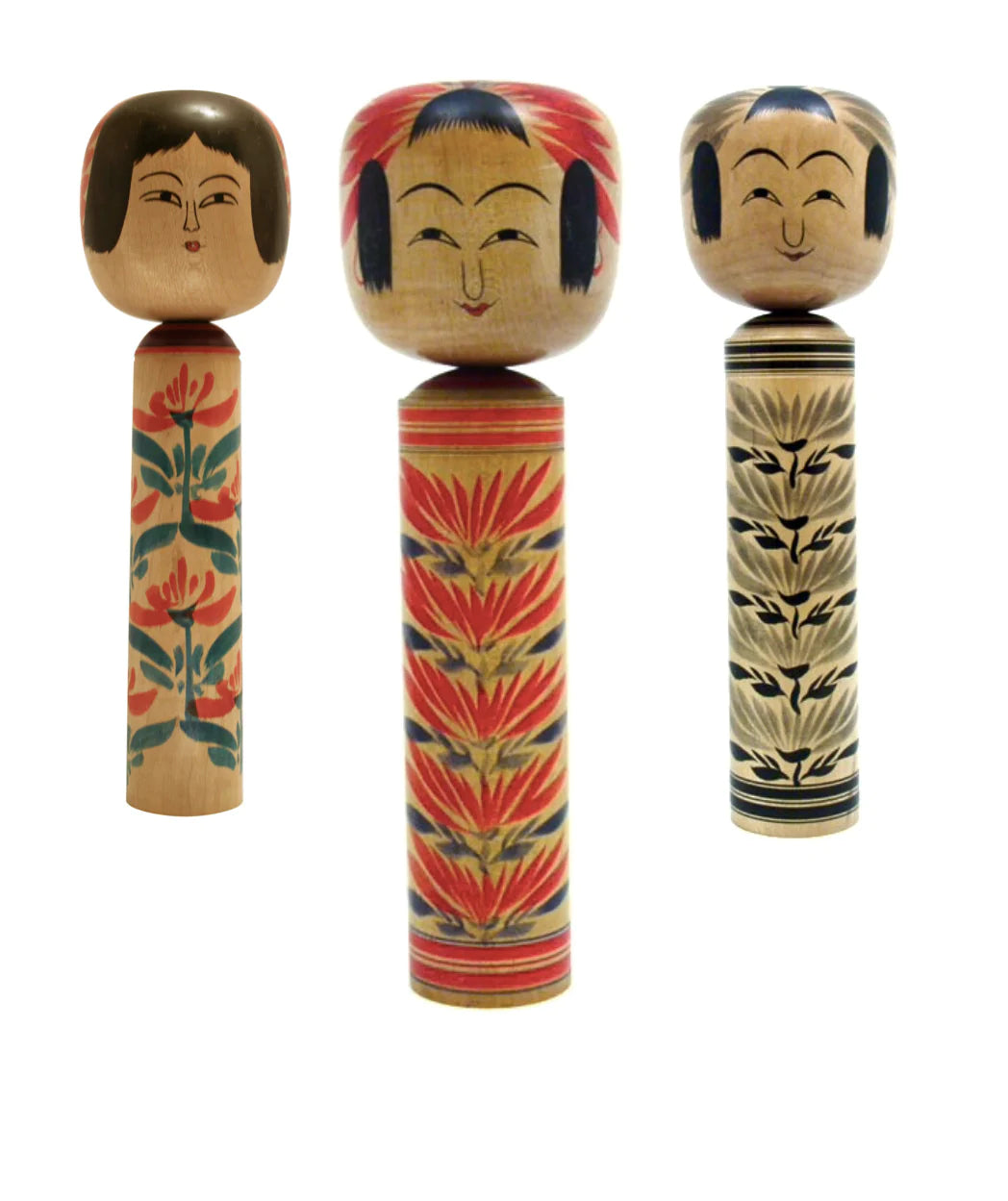




Japan Mizusakura Cherry Tree Bark Tea Leaf Case | Kaba zaiku
Dimensions: 3-1/2”h x 2-1/2”w x1-0”d
This Kaba cherry bark, (while the character for Kaba means birch, for this context the word refers to the bark of wild cherry trees since this word in Japanese is generic) woodcraft is a traditional handcraft of the city of Kakunodate, Akita prefecture, which is located in Northern Japan. Kakunodate also called “little Kyoto” is known for the beautiful sakura trees and old buildings occupied by the samurai and where the tea ceremony was cherished. Their way of peeling the bark of mountain cherry does not harm the trees. The trees still have the ability to reproduce themselves. It's the Japanese way of thinking to live with nature.
This case is used when preparing tea for guests and carried in one's sleeve to easily transport the tea from place to place. This Cherry Tree bark case has high seal ability and keeps things inside dry (moisture proof) having special inherent features that reject humidity and protects tea leaves from dryness. These small boxes as well as a cylinder type that has a metal lining were originally developed during the Meiji period (1868-1912) when many samurai were out of a job and took up producing Kaba cherry bark woodcrafts as a source of income. Other support objects were also produced as tea scoops (chami), not included in this sale, and used to collect dried tea leaves for tea preparation (see image).
As seen in this beautiful container, the sheen, subdued colors, and the natural beauty of the cherry bark patterns enhances this special tea ceremony container. In this case, the Kaba cherry bark utilizes a technique called Kijimono in which paper-thin wood sheets of bark are glued together by pressing with a heated trowel and stitched together to produce box-shaped containers. Additionally is a beautiful bamboo tree/branch/leaf motif incorporated into the face of the box.
Condition: Excellent and beautiful original condition and perfect throughout the exterior and interior of the box.
Additional Information: It is said that this craft began in the 1780s when the technique was introduced to Kakunodate by a “Shugenja" Buddhist monk from the Ani region in northern Akita Prefecture. These Buddhist monks also known as Yamabushi are the mountain-wandering priests of Japan who carried tea leaves on their person to support their search for enlightenment.
Return Policy
Our antique/vintage pieces are identified/described and professionally photographed, and considered, “as is”, therefore all sales are final. Read our full refund and return policy.


